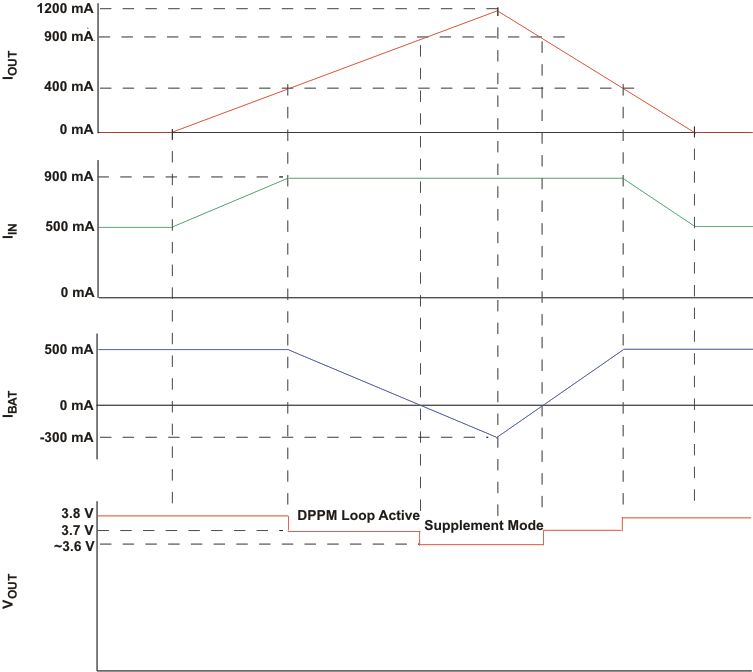ZHCSGY5A October 2017 – December 2017
PRODUCTION DATA.
- 1 特性
- 2 应用范围
- 3 说明
- 4 修订历史记录
- 5 说明 (续)
- 6 Device Comparison Table
- 7 Pin Configuration and Functions
- 8 Specifications
- 9 Detailed Description
- 10Application and Implementation
- 11Power Supply Recommendations
- 12Layout
- 13器件和文档支持
- 14机械、封装和可订购信息
9.3.4.1.3 Battery Supplement Mode
While in DPPM mode, if the charging current falls to zero and the system load current increases beyond the programmed input current limit, the voltage at OUT reduces further. When the OUT voltage drops below the VBSUP1 threshold, the battery supplements the system load. The battery stops supplementing the system load when the voltage at OUT rises above the VBSUP2 threshold.
During supplement mode, the battery supplement current is not regulated (BAT-FET is fully on), however there is a short circuit protection circuit built in. Figure 31 demonstrates supplement mode. If during battery supplement mode, the voltage at OUT drops VO(SC2) below the BAT voltage, the OUT output is turned off if the overload exists after tDGL(SC2). The short circuit recovery timer then starts counting. After tREC(SC2), OUT turns on and attempts to restart. If the short circuit remains, OUT is turned off and the counter restarts. Battery termination is disabled while in supplement mode.
 Figure 16. bq24076/78 DPPM and Battery Supplement Modes (VOREG = VBAT + 210 mV, VBAT = 3.6 V)
Figure 16. bq24076/78 DPPM and Battery Supplement Modes (VOREG = VBAT + 210 mV, VBAT = 3.6 V)